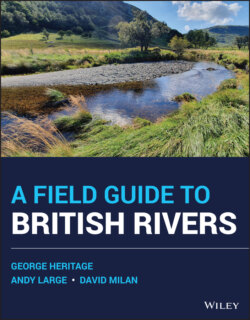Читать книгу A Field Guide to British Rivers - George Heritage - Страница 15
1.5 Purpose of This Book
ОглавлениеThis book aims to highlight the true form and function of watercourses and valley bottom areas using examples from the British Isles on which the authors have worked, either individually or together, over the last three decades. The intention is to encourage the reader to view fluvial systems, and their potential for management and restoration in a new light using examples of functional river types. The book will act as a guide to recognising these river types, and Chapter 2 serves to illustrate and widen understanding of their classification into different functional types based on character and complexity. In Chapter 3, we illustrate the morphological unit makeup of, and drivers and processes behind, each river type through a comprehensive photographic guide, and review the current research understanding of their form and function through a focussed review of published studies. Whilst we include examples of the science from outside the British Isles, these studies all focus on temperate rivers, and all examples of functional river types used are from the United Kingdom. Of great value to the river scientist is the ability to infer fluvial processes and probable directions of fluvial change from the current morphology of the system, and in Chapter 4, we provide a guide to “reading” rivers, describing key watercourse indicators that help in this task. Finally in Chapter 5, we provide some thoughts regarding sensitive and appropriate management for British rivers going forward.
Figure 1.5 Semi‐natural multi‐channel network on the River Narr.
Figure 1.6 Laterally migrating active channel on the River Mallart, Syre, northern Scotland.
Figure 1.7 Active reach of the River Glen at Kirknewton, Northumberland, showing bank erosion and bar formation.
Figure 1.8 Wandering reach of the River South Esk, Scotland, showing sediment deposition and temporary storage.
